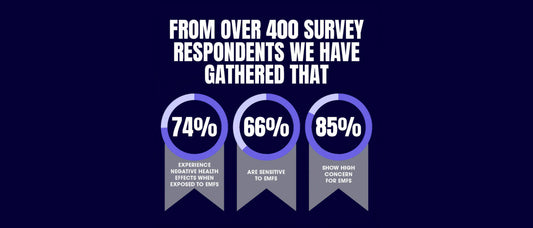Electromagnetic Hypersensitivity (EHS) is a condition in which individuals experience adverse health effects in response to electromagnetic field (EMF) exposure from common sources such as WiFi, cellular phones, power lines, smart meters, and household appliances. This condition is also known as electro-sensitivity.
While mainstream science has historically been skeptical of EHS due to its varied symptoms and lack of standardized diagnostic criteria, recent research is beginning to uncover potential biological mechanisms that support the lived experiences of EHS sufferers.
What Is EHS?
People with EHS report a wide range of symptoms, including:
- Headaches and migraines
- Fatigue and sleep disturbances
- Brain fog, memory issues, and poor concentration
- Skin tingling or burning sensations
- Muscle pain and dizziness
- Cardiac arrhythmia or chest discomfort
- Vision and hearing irregularities
Symptoms often begin within minutes of EMF exposure and may last for hours or even days, depending on the strength and duration of the exposure.
Though EHS is not currently recognized as a formal medical diagnosis by the World Health Organization (WHO), its effects on individuals can be debilitating, often affecting their ability to work, socialize, or even live in urban areas. Concerns over EMF health effects go back over 25 years, when the European Commission coined the term EHS to describe self-reported clinical conditions attributed to EMF exposure.
And concerns around EHS are only going to continue to grow as our digital world becomes more saturated with EMF radiation. In fact, it is estimated that as much as 20% of the population may already suffer from EHS.
A Biological Mechanism for EHS? New Scientific Insight
A 2024 case report published in Communicative & Integrative Biology provides compelling new evidence for how EMF exposure might cause physiological symptoms in some individuals.
Key Findings From the Case Study
- The subject, a 25-year-old male, experienced severe and rapid-onset EHS symptoms within minutes of exposure to EMF radiation.
- Standard medical tests (MRI, EEG, blood panels) showed no abnormalities.
- However, he showed significant oxidative stress, including:
- Low levels of antioxidants (Vitamin C, beta-carotene, CoQ10)
- Elevated levels of superoxide dismutase (SOD), an enzyme produced in response to cellular oxidative stress
- A 40-fold increase in antibodies against oxidized LDL (LDLox), a lipid byproduct of oxidative stress known to trigger immune reactions
What This Suggests
Electromagnetic fields may increase reactive oxygen species (ROS) in cells, leading to oxidative stress. In sensitive individuals, this may trigger immune responses, inflammation, or even autoimmune-like symptoms, providing a plausible biological mechanism for EHS.
Genetics and Environmental Susceptibility
Some individuals may be genetically predisposed to have weaker antioxidant defenses or heightened immune reactivity. In the case study, the patient had a family history of heavy metal toxicity, suggesting that environmental exposures or inherited detoxification impairments may increase susceptibility to EHS.
Diagnosing EHS: Beyond Standard Tests
Currently, there is no universally accepted test for EHS. However, the case study points to oxidative stress biomarkers, such as:
- Vitamin C, beta-carotene, CoQ10 levels
- SOD and GSH peroxidase levels
- Anti-LDLox antibodies
These markers may serve as potential screening tools in the future to identify physiological responses to EMF exposure.
A Balanced Perspective
Scientific consensus has not yet established a causal link between EMF exposure and the broad range of EHS symptoms in the general population. However, emerging research like the case report outlined here is helping to uncover potential underlying mechanisms, helping to bridge the gap between anecdotal reports and biology.
It’s important to approach EHS with both scientific rigor and compassion. The symptoms are real and debilitating for those who suffer from them, and future research will hopefully lead to greater clarity, improved diagnostics, and targeted therapies.
While we wait for science to catch-up, for now, if you think you suffer from EHS there are easy ways you can reduce your exposure and see if that helps your symptoms.








